Our view at Stack - Pipedrive is a robust CRM platform, offering automation, contact data collection, webhooks, AI-powered sales assistant, email communications, email marketing, and customisable sales pipeline workflows.
Social media marketing can be daunting, especially for busy small business owners with other responsibilities.
You don’t need to know everything about social media to start, but you need to know the basics to succeed.
In this article, you’ll learn the essential information to start building a well-defined, measurable social media marketing strategy that aligns with modern audiences.
What is social media marketing?
Social media marketing is a form of digital marketing that involves promoting your brand, product or service on social media channels. It consists of posting “content” (e.g., images or videos) on platforms like Facebook, Instagram, X, LinkedIn, TikTok, Snapchat and more.
Brands of all sizes use social media platforms to help future customers discover and connect with them. The right activities on the right platforms can drive traffic to your website, direct leads to products and forms and boost sales.
Big businesses with deep pockets can dominate paid search ads, but social media platforms’ algorithms put small businesses on equal footing, giving you a greater chance of being discovered.
Why use social media media marketing?
Social media platforms have over five billion user identities, including your competitors. If you don’t have a presence, you’ll miss out on daily opportunities to attract people to your business.
Social media can seem intimidating to those inexperienced with the channel, but it’s an opportunity for small business owners and brands to introduce themselves as the humans behind the business.
Customers can then more easily relate to and build connections with your company, so they already have your business in mind when they’re ready to purchase.
For example, e-commerce platform Shopify asks questions on its Instagram page to engage its audience of existing entrepreneurs and people thinking about starting an online shop.

The team received tons of replies from its audience, who were also able to learn from others in the comments.
Note: The “engagement” in the comments (e.g., likes and replies) signals to the algorithm that this is a popular post, so it pushes the post out to more people. Algorithms differ by platform and are constantly changing, but they’re all designed to put relevant content in front of people who will interact with it.
Shopify replies to the commenters with encouraging words to connect with people and strengthen their affiliations with its brand.

Posting valuable or entertaining content can help even small brands and startups get discovered and shared.
What are the key aspects of social media marketing?
There are many social media platforms to choose from, each specializing in certain types of content (e.g., videos or text) and appealing to different audiences (e.g., LinkedIn for B2B).
For all platforms, there are several key aspects to understand about successful social media marketing:
-
Content creation. Ideating topics that resonate with your target customers and then creating content around those topics, usually involving images or video and captions.
-
Community engagement. Creating or joining conversations, interacting with followers and responding to direct messages (DMs) to build a dedicated following.
-
Advertising. Using paid social media ads (e.g., Facebook Ads) to push your organic content to more people with specific interests and behaviors, like those who already buy your products.
-
Analytics and reporting. Monitoring performance metrics (e.g., engagement and conversion rate) to understand what works and improve future campaigns.
-
Influencer and brand partnerships. Collaborating with other brands or people (who have large and engaged followings) to promote products or services to their audience.
-
Brand positioning. Using social media to showcase your brand story, personality, values and products or services.
-
Customer support. Providing real-time customer service through social channels (like X, formerly Twitter) to address queries, concerns and feedback.
We’ll explain how to develop your social media marketing strategy shortly, but first, let’s explore the benefits.
Recommended reading

What is inbound marketing? Definition, examples and strategies
What are the data-backed benefits of social media marketing for businesses?
Social media marketing can help businesses of all sizes get their names in front of people who are most likely to care about what they sell.
If done right, it can be a powerful marketing tool that helps you drive traffic and close more deals.
Here are four data-backed benefits of social media marketing for brands.
1. Meet audiences where they spend their time
Staying visible and relevant is crucial in a competitive market. Social media platforms have billions of active users and offer smaller brands a vast audience base.
Scrolling through various channels is a popular pastime for people of all ages. Global users spend an average of 2 hours and 26 minutes on social networks daily.
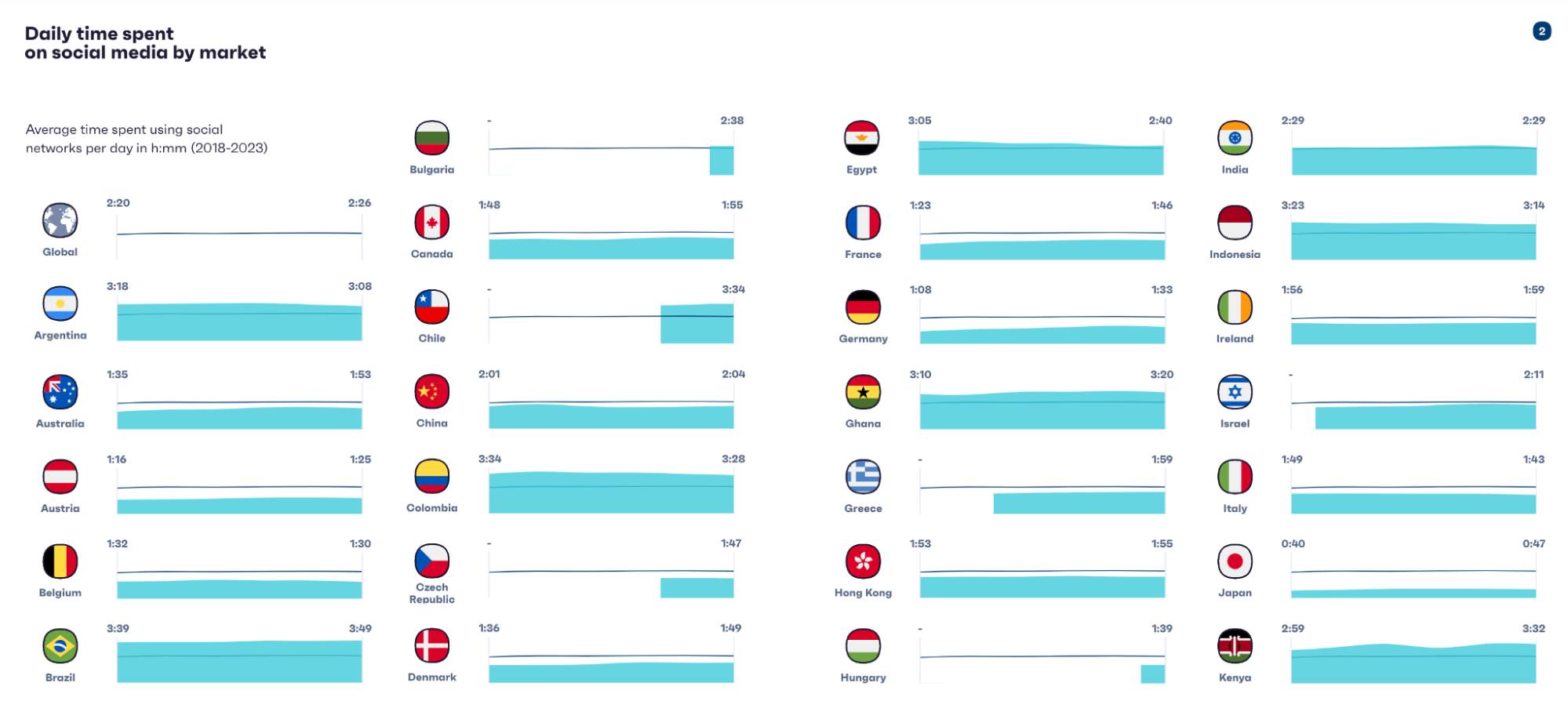
Social media also allows for real-time customer interaction, making people feel more connected to you and even prompting them to buy.
Brands can also receive messages and respond to followers, using feedback to improve products and services as they grow.
2. Be your audience’s trusted resource
When your audience sees you as a knowledgeable authority in your industry, it can boost their perception of you and their trust in you. It’s one of the best tools a smaller brand has against bigger brands when it can’t compete on price or convenience.
Positioning yourself as a trustworthy resource (where followers value your insights and recommendations) can encourage loyalty, repeat engagement and purchases over time.
According to Edelman research, Gen Z (those born between 1997 and 2012) feels it’s more important than ever to trust brands they buy from, but other generations are following suit.
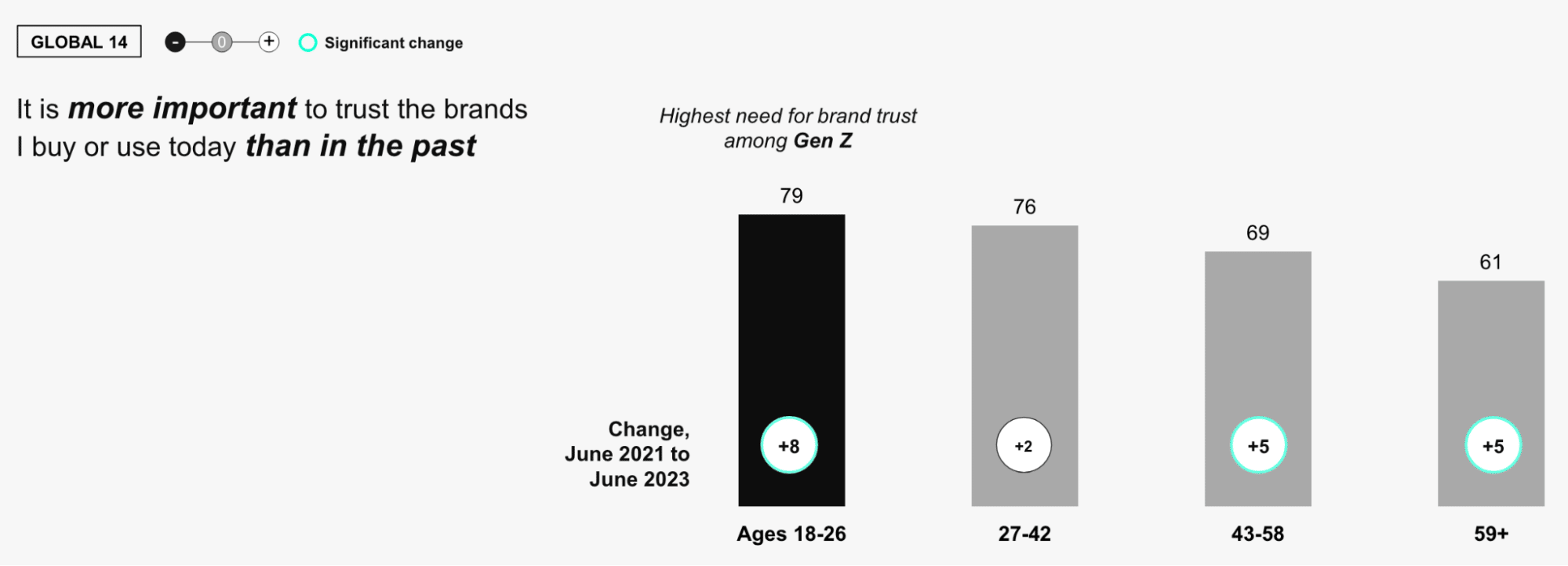
Becoming a go-to resource for knowledge and building trust with your audience requires a strategic approach for small businesses.
You’ll need to provide consistent value (give your audience something they can learn from or be entertained by), establish credibility and engage with them regularly. More on that soon.
3. Increase brand awareness and encourage word-of-mouth marketing
For people to buy from you, they need to know you exist. Social media and content marketing can be a cost-effective, potentially free way of getting your name out there.
For example, video is a popular social media format you can create with a smartphone. Some 90% of video marketers say it’s helped them build brand awareness.
In addition to extending reach, mentions, re-shares and recommendations from others can carry significant weight. Social media has become such a powerful form of word of mouth that strangers can even drive people to action.
4. Learn about your market using social listening
Brands of all sizes proactively use social listening to monitor social media content on all channels. They look for mentions of their company, product or service, target audience and competitors.
Smaller companies can use the same information to build an informed picture of audience sentiment (how people feel about their brand and offerings). It can also help to pinpoint areas where they can improve or gain a competitive advantage.
Instagram, X, Facebook, TikTok and LinkedIn are the five most important data sources for social listeners. However, that doesn’t mean you must be on all these social media channels.
We’ll explain why in the next section.
Recommended reading

Everything you need to know about customer sentiment
How to build an effective social media marketing strategy
Building a strategy is an in-depth process, but you can break it down into more manageable chunks.
Here are four crucial steps for creating a successful social media marketing strategy.
Step 1. Decide on your platform and set clear social media marketing goals
Your social media goals should directly contribute to your company’s broader business goals. For example, increasing brand awareness or sales.
A crucial decision point is picking the platforms you’ll use. According to social media management tool Hootsuite, 58% of marketers feel social networks release new features too quickly to keep up.
Instead of trying to be on every platform, it’s more important to figure out those that tangibly benefit your business. For example, if you’re a B2B small business owner, you may get the most leads from LinkedIn and Instagram.
Using that information, you can dedicate enough time to grasp each site’s unique specifications (e.g., keywords, hashtags, algorithms etc.) to post and engage successfully.
Note: What works on each platform changes constantly. Find platform experts and influencers for your chosen channels and follow them to optimize your strategy alongside updates.
Setting measurable goals can help you monitor the effectiveness of your social media strategy, letting you know if you’re on the right track or if it’s time to change course.
SMART goals are nothing new in business, but they can certainly apply to your social media marketing goals:
-
Specific. Define your goal and how you’ll achieve it.
-
Measurable. Figure out the metrics you need to determine success.
-
Achievable. Avoid targets that are overly challenging or stressful.
-
Relevant. Align it with broader business objectives.
-
Time-based. Set time limits for achieving your goals.
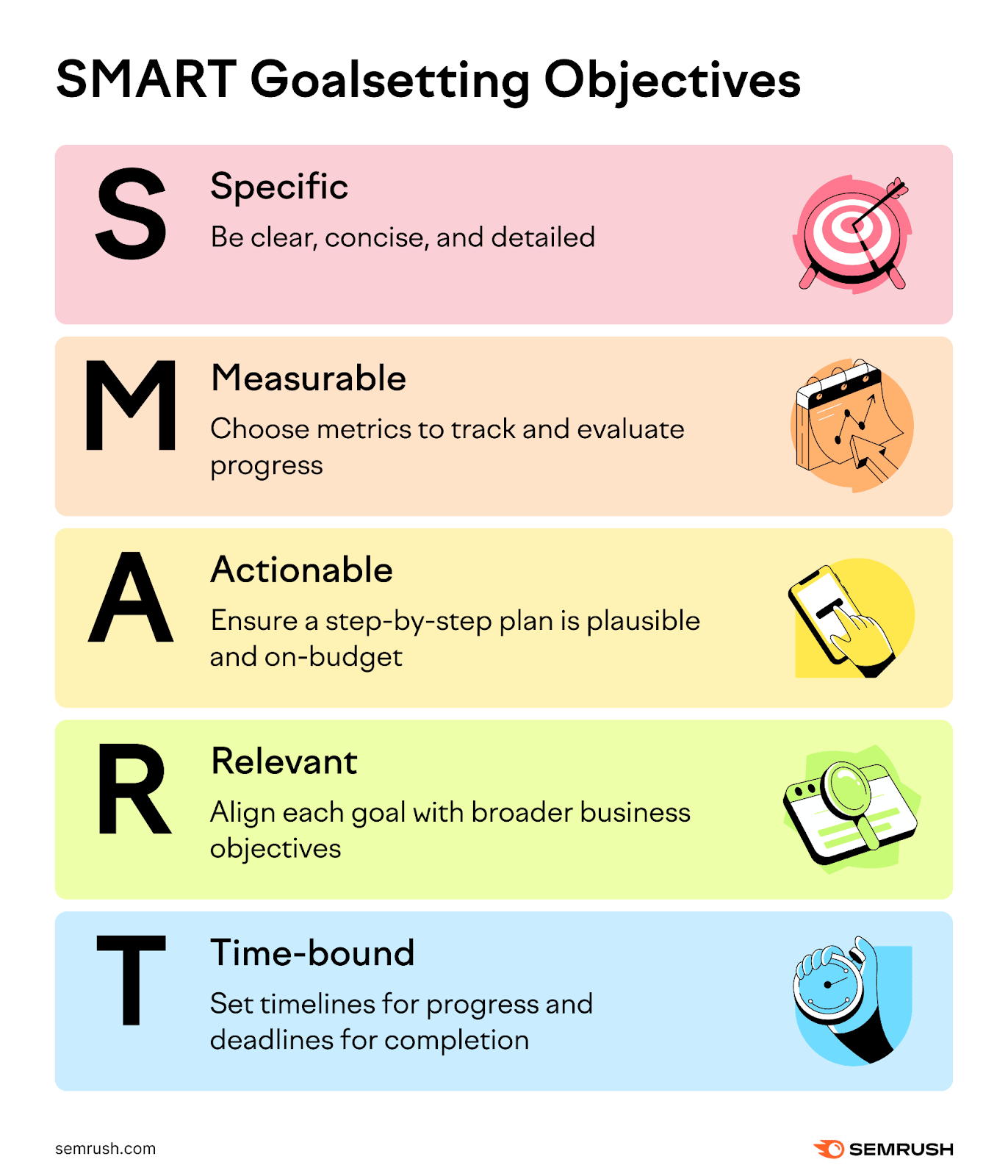
For example, a SMART goal could be to “increase brand mentions on Instagram by 20% over the next quarter by arranging monthly giveaways on the platform”.
Once you’ve set your goals, you’ll choose how to measure your progress toward them. These are called key performance indicators (KPIs) and can include results like mention volume, new followers and referral traffic. We’ll talk about metrics more soon.
Download Your Sales and Marketing Strategy Guide
Grow your business with our step-by-step guide (and template) for a combined sales and marketing strategy.
Step 2. Learn about your audience segments and competitors
Different people from a variety of backgrounds buy your products or services. However, many will have overlapping reasons for doing so.
Knowing why customers buy your products allows you to align and tailor your sales and marketing efforts (known as “smarketing”) to produce content that appeals to them. It also helps you better target similar types of leads on social media.
Plus, in an increasingly AI-powered world, creating personalized content is vital. Almost 90% of leaders believe personalization will be crucial to their company’s success over the next three years.
You can group and categorize your buyers with a process called customer segmentation.
How to segment your customers
You can segment your audience (and create content that fits their personal situation and needs) based on qualities like:
-
Demographics (e.g., age and job role)
-
Location (e.g., region and climate)
-
Economic and social factors (e.g., income and stage of life)
-
Behavioral preferences (e.g., interests, hobbies and pain points)
-
Technological preferences (e.g., preferred devices and platforms)
Once you have this data, you can create ideal customer profiles (detailed descriptions of the perfect companies for your product). You can also build buyer personas (fictional representations of ideal customers’ traits and behaviors).
Here’s what an ICP looks like for a B2B brand.
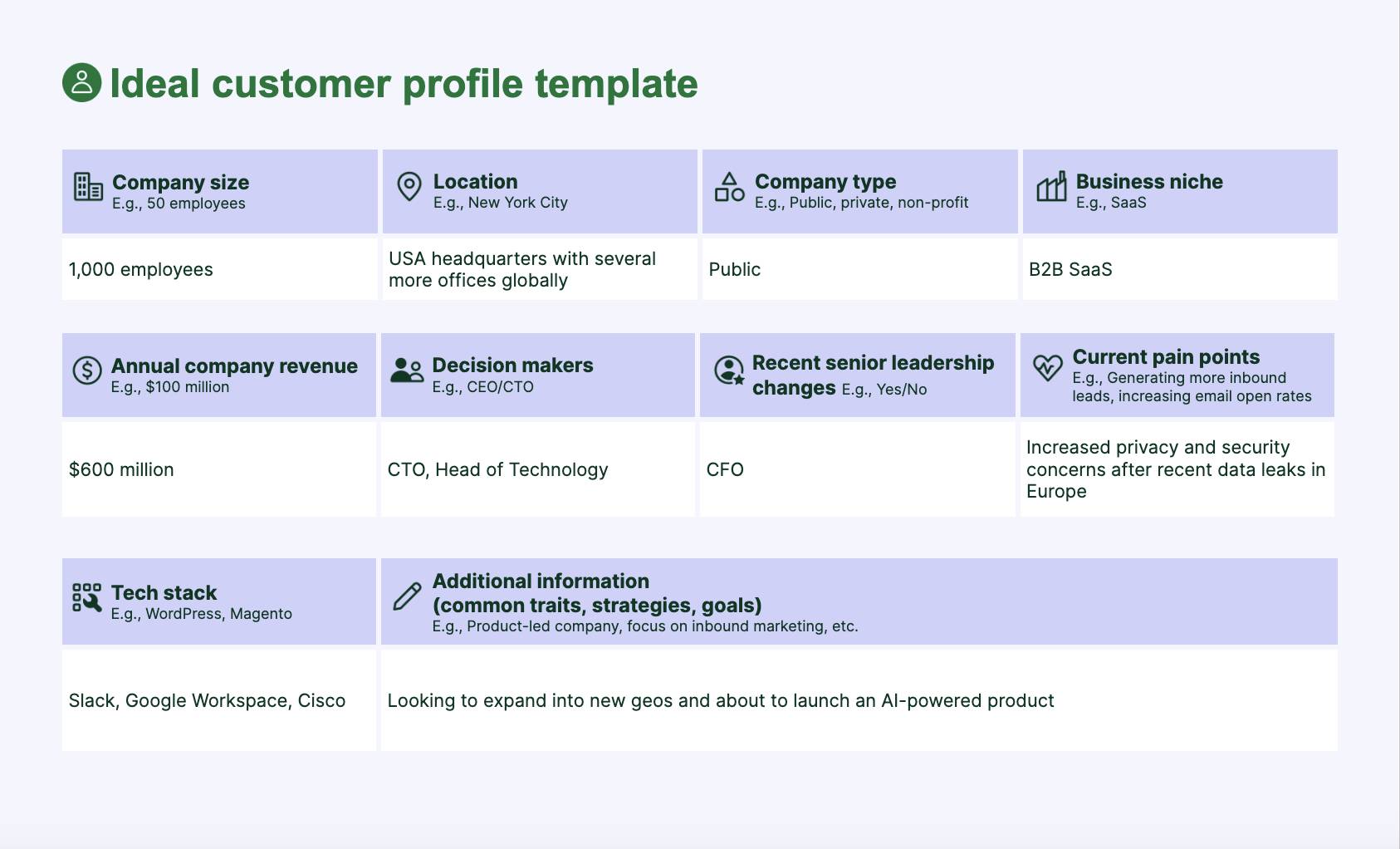
Let’s say you sell fleet management software. Analyzing your customer data unearths two main types of buyers:
Each segment will be interested in different parts of your software and the content surrounding it.
Download your ideal customer profile template
Download the ideal customer profile template to help your teams sell to the right people
For example, you may post a case study called “How A2B Logistics improved delivery times by 20% with route optimization” on LinkedIn that would interest other logistics companies. You could also film a YouTube webinar for fleet managers with tips for monitoring driver safety and staying regulation-compliant with software.
You can use a customer relationship management (CRM) platform like Pipedrive to automatically pull data from social media and populate these customer profiles.
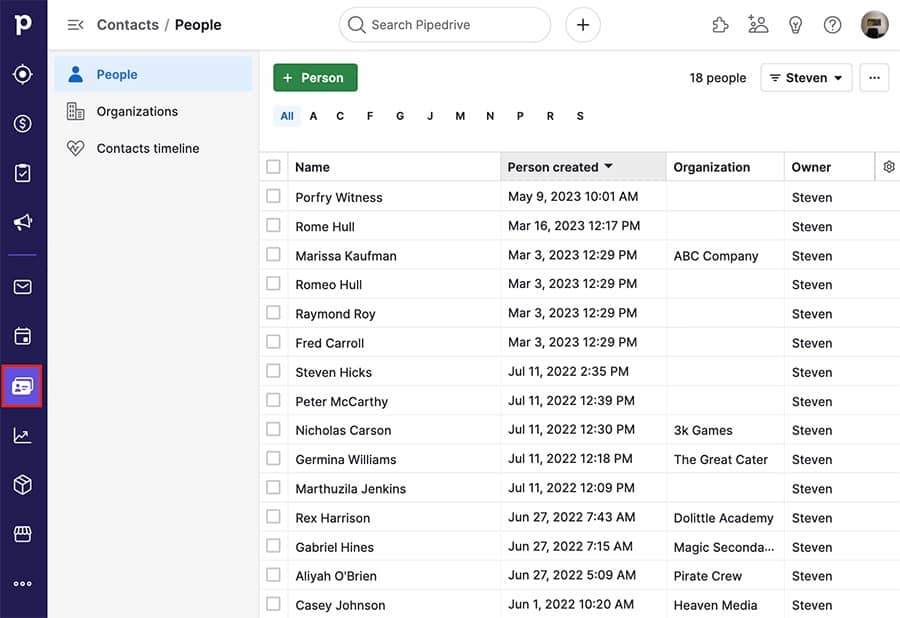
You can use this publicly available information to build complete pictures of your audience segments and reach out to them with relevant content.
Tip: A social CRM like this can also help you nurture these leads on auto-pilot and build long-term relationships that increase sales over time.
Conduct a competitive analysis
When researching, it’s also important to examine your competitors’ activities and how they target audiences similar to yours. You can do this with a process called competitive analysis.
Here’s how you analyze your competitors on social media:
-
List direct competitors in your industry
-
Review the platforms they’re on, the type of content they create and how often they post
-
Assess metrics (e.g., likes, comments, shares and follower count) and compare them to your own
-
Analyze competitors’ use of visuals, colors and branding elements
-
Observe how competitors engage with their audience
-
Note where competitors do well and where they could improve
-
Find market gaps or opportunities you can leverage
For example, you may find that your competitors get the highest engagement on LinkedIn with in-depth reports and expert insights. Taking this information, you plan and record a podcast series of expert interviews that you drip-feed in posts.
However, their behind-the-scenes Reels are the content audiences engage with the most on Instagram. You could compete with these by filming and posting employee day-in-the-life stories.
Competitive analysis helps you understand industry trends, identify opportunities for improvement and refine your strategy to outperform others in your niche.
Download our competitor analysis template
Use this template to compare yourself to your competitors and see where you stand
Step 3. Create compelling content that aligns with modern audiences
Once your social media marketing plan is in place, you must develop engaging posts aligned with your brand’s voice and values. You want to reflect the personality and principles of your small business.
Let’s say you consistently post company updates but don’t get results. In this case, you may need to align your platforms more with what audiences want to see.
Hootsuite found that one in two people feel tired of self-promotional brand content on social media. Almost 60% think brands do too much social media advertising.
The social media management tool also discovered that consumers’ three favorite types of content are something new, funny and inspiring.
You can use this data and your own research to inform your social media marketing campaigns based on modern users’ preferences.
For example, writing assistant Grammarly uses its TikTok account to ask its employees light-hearted questions, add funny clips to product walkthroughs and poke fun at itself as a company.
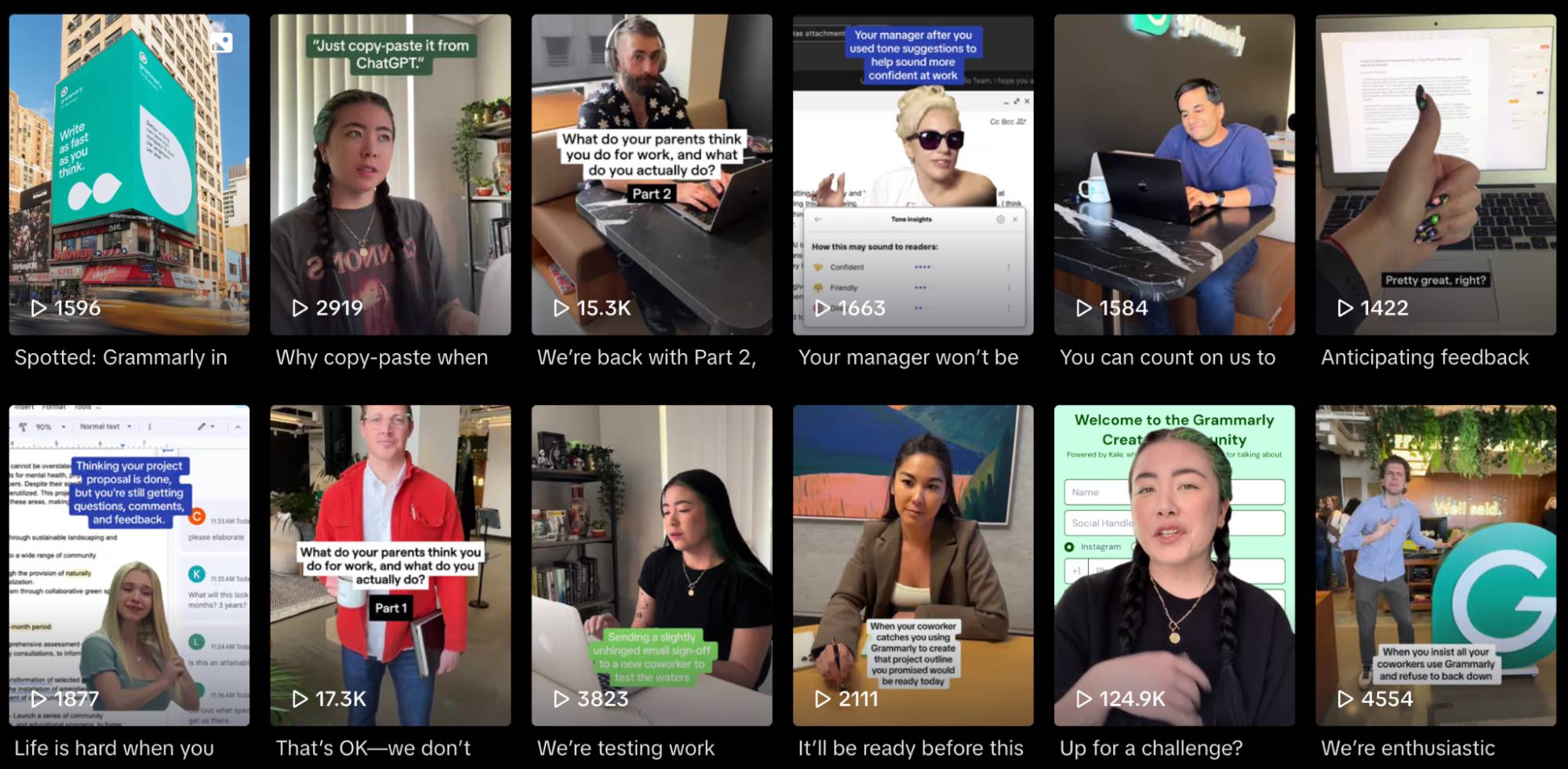
Your content style will differ depending on your industry, offerings and identity, but you can still monitor recent trends.
Here are some creative content marketing ideas that appeal to audiences in 2024.
Experiment with long-form video
Thanks to platforms like TikTok and Instagram, short-form video has dominated in recent years.
However, recent updates have seen the platforms offering longer videos to rival YouTube and provide deeper storytelling and engagement.
For example, you can now post videos that are up to an hour long on TikTok.
On the video platform YouTube, long-form videos may count as anything over 10 minutes and offer brands an opportunity to post in-depth content that offers rich value for their customers.
Videos like these help audiences see the brand as a trustworthy and knowledgeable source of information and build an affinity with the company.
For example, search engine optimization (SEO) tool Clearscope often records hour-long webinars on its YouTube account.
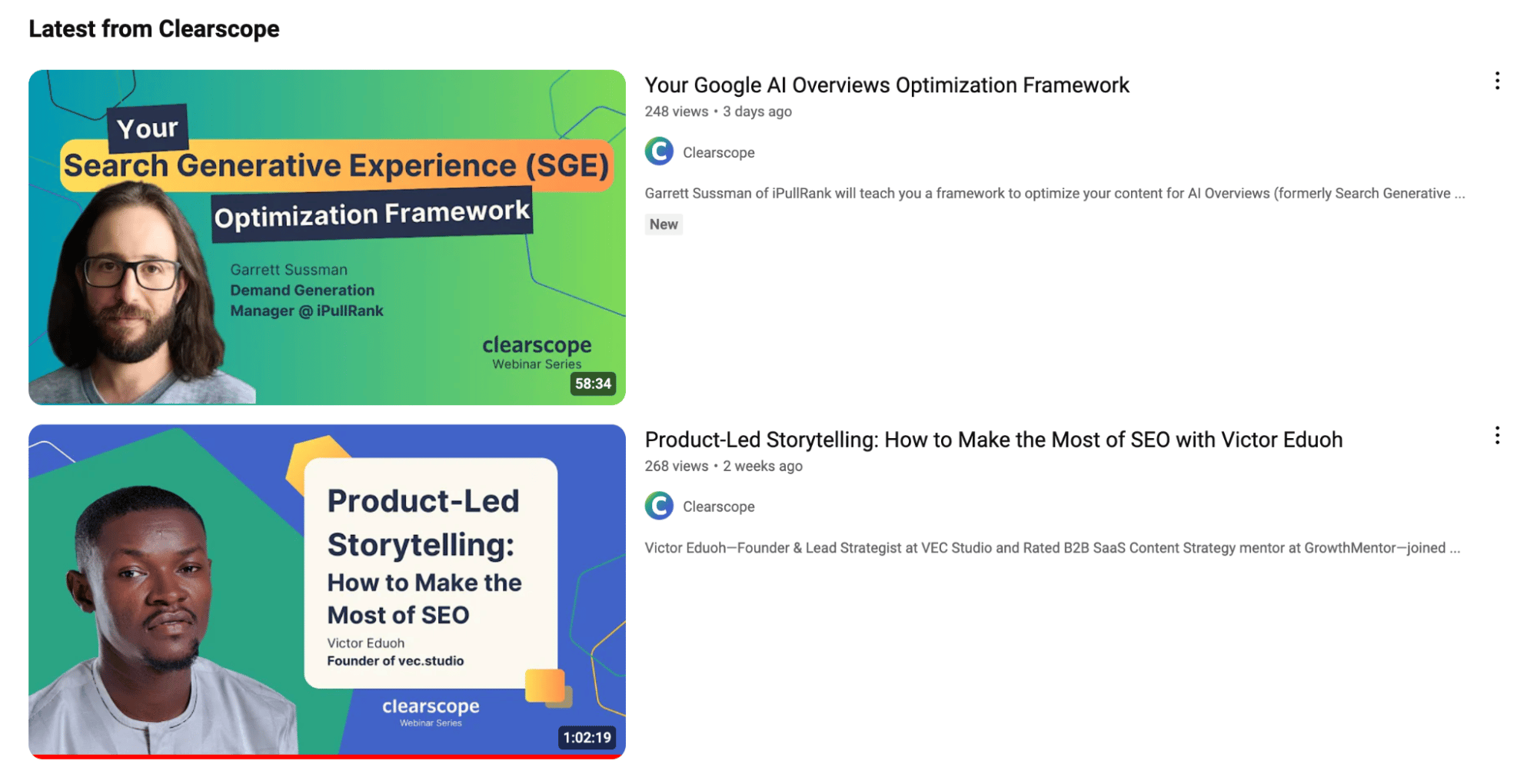
The videos detail how to build SEO-driven content strategies and use Clearscope as part of them. The platform also promotes the webinar links on its LinkedIn account.
Long-form videos capture attention just as well as shorter versions. However, they also build stronger connections with audiences seeking valuable and informative social content.
You can experiment with this format by creating:
-
Comprehensive tutorials on getting the most out of your product or service
-
In-depth reviews of new products you’re releasing
-
Expert interviews or discussions that relate to your industry or products
-
Educational content (e.g., explaining complex concepts or sharing tips related to your product)
-
Coverage from industry events and trade shows (e.g., you could create a “social media event marketing guide”)
By leveraging this trend, small brands can showcase expertise, build credibility and encourage viewers to spend more time engaging with their content.
Make playful content (if it fits your brand identity)
Content that makes social media users laugh, feel happy or spark creativity is becoming increasingly popular.
For brands, playful content can help humanize your company and encourage interaction and sharing among your followers.
For example, design platform Canva mixes product updates on LinkedIn with funny, light-hearted posts.
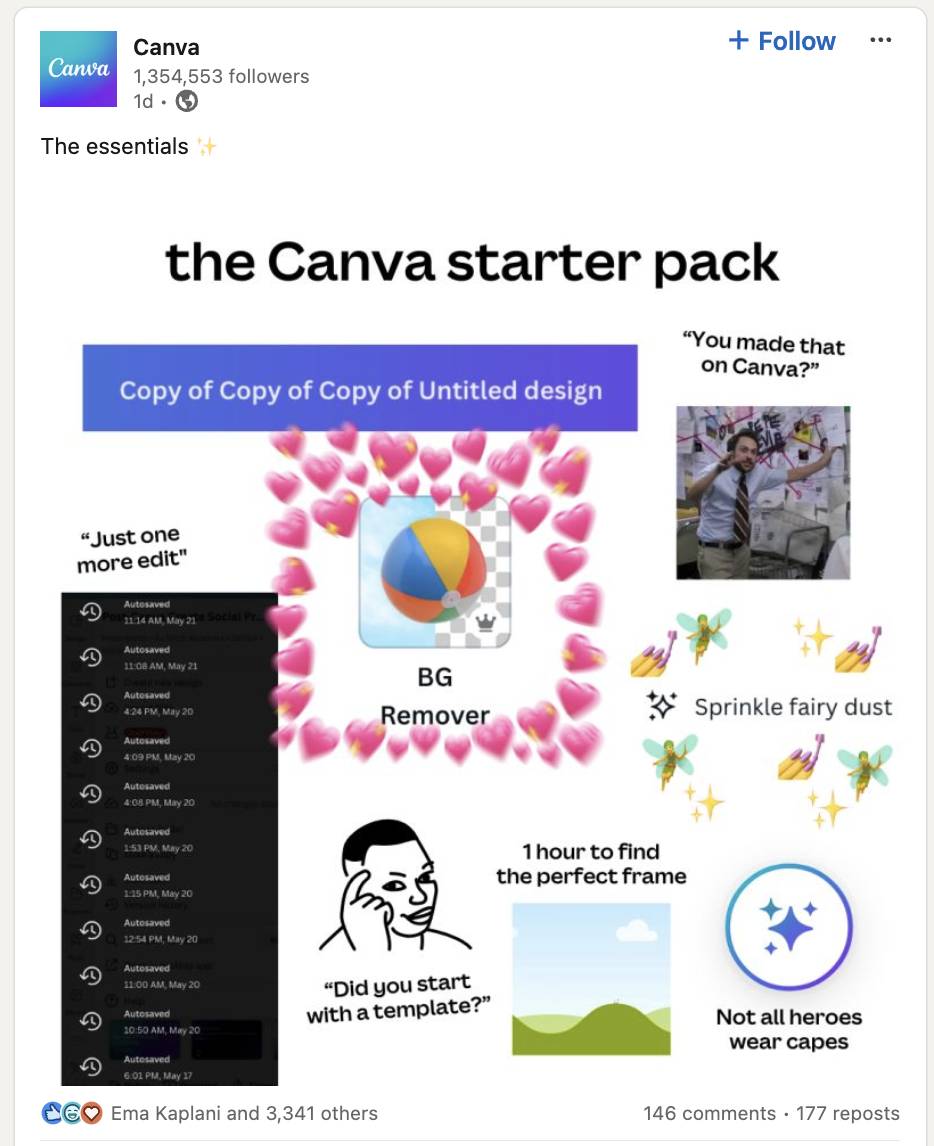
Doing so balances its social media presence to appeal to the professional and relatable human aspects of its audience.
Your small business can capitalize on the playful trend by:
-
Injecting humor into your posts
-
Creating light-hearted narratives that resonate with your audience
-
Using relatable, relevant memes
-
Getting involved in trending challenges (e.g., TikTok dances)
-
Showing your company behind the scenes (e.g., live videos from your office)
However, if you’re to succeed with playful content, it must always align with your company values. Staying true to yourself will help you reap the benefits while maintaining credibility and engagement.
Step 4. Create a social media presence that’s always “on”
A timely social media presence is crucial for small business marketers who want to keep their fingers on the pulse of these ever-changing platforms.
The rise of AI also means people expect faster responses. According to Sprout Social, 76% of consumers value quick brand responses, and nearly 70% expect replies within 24 hours.
How quickly consumers expect a response from brands on social (2023)
How quickly consumers expect a response from brands on social (2022)
Appearing constantly active means more visibility for your brand and content, which can help drive awareness that leads to sales.
Responding promptly to comments and messages, for example, lets you connect with your community, solve their problems and keep them happy.
Doing so consistently can also help you capitalize on timely opportunities (e.g., trending hashtags) to keep a competitive edge. However, always appearing available can be time- and resource-intensive without the right strategy – especially for small businesses.
Here are some ways you can appear available but take the pressure off:
-
Respond with marketing automation tools (e.g., chatbots with machine learning functions)
-
Create a content calendar to schedule posts consistently
-
Employ a social media manager to handle content and real-time customer engagement
-
Actively seek out opportunities to engage with your audience on relevant topics or trending hashtags
-
Enable push notifications for new comments and messages so you can respond promptly
You can also keep social media messages in the same place as other communications to manage them more efficiently.
For example, Pipedrive’s Facebook Messenger integration lets you view and respond to messages from within your CRM system.
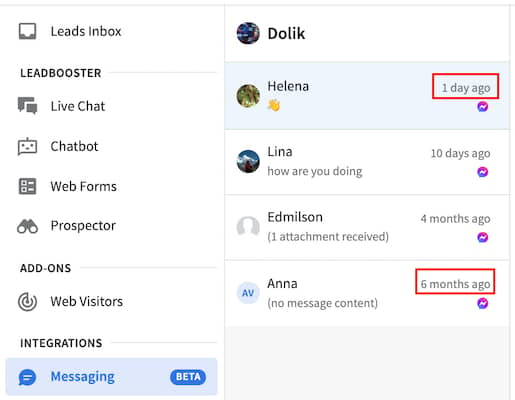
You can create deals or leads from here and connect them to the corresponding conversation. You can also link conversations to existing contacts to create a richer database of information.
This integration makes things easier for small businesses by putting all customer messages and details in one place. It also helps you manage contacts better and stay organized so you can respond quickly and accurately.
Recommended reading

Create an effective marketing automation strategy and improve your ROI
Crucial social media marketing metrics and data to track
As with any digital marketing strategy, you must monitor specific metrics and adjust your tactics based on performance.
There are two types of data you need to gather to get a complete picture of your strategy:
-
Quantitative data. Numbers you can measure and analyze statistically (e.g., engagement rate or website traffic).
-
Qualitative data. Descriptive information that gives you insight into people’s behaviors, motivations and opinions (e.g., customer feedback or interview responses).
Let’s dive into both.
How to track quantitative data
You can use different platform analytics tools (e.g., Facebook’s Audience Insights or LinkedIn Analytics) to gather quantitative data on your performance metrics.
These platform-specific tools can also help you target people with specific interests and behaviors with content they’ll likely enjoy.
Quantitative metrics you can use to measure social media marketing success include:
-
Engagement rate. The number of likes, comments, shares, reposts and overall interaction with your content.
-
Reach. The number of unique users who have seen your content.
-
Impressions. The total number of times users have scrolled past your content.
-
Click-through rate (CTR). The percentage of users who click on your content’s link.
-
Conversion rate. The percentage of users who complete a desired action after clicking.
-
Follower growth. The increase in the number of followers over a specific period.
-
Social share of voice. Your brand’s mentions in comparison to competitors.
-
Audience sentiment. Buyers’ and potential customers’ feelings about you, based on their comments, posts and mentions.
-
Referral traffic. Traffic to your website from social media platforms.
-
Return on investment (ROI). Revenue generated from social media activities compared to the cost.
If you can afford an additional price, you can also try dedicated third-party tools (e.g., Hootsuite and Sprout Social) to get deeper insights into your social media analytics.
How to gather qualitative data
For qualitative data, learn how people perceive your small brand on social media by tracking brand mentions using social listening.
For example, Uber reshared this post about a song that played during someone’s ride:

You can also gather countable qualitative data, such as how often people mention your company in comments, tag friends and speak about you positively.
Here’s how these insights can help you determine the success of your social strategy:
-
Frequent mentions suggest lots of people are seeing and speaking about your brand on social media
-
Positive keywords indicate people view you favorably and are happy with your service
-
Regular tagging shows your content is compelling and shareable, which could help expand your audience organically
You can search for these insights by typing your brand name or product into different platforms. You can also use third-party tools like Mention or Brandwatch.
For more in-depth insights, you can arrange interviews with customers and followers. However, this will take a lot more time and resources.
It’s also important to note that your social media marketing strategy must evolve as platforms and features evolve. However, the advice below can help you discover what’s effective for you.
Recommended reading

4 steps to turn sales reporting data into actionable insights
The state of social media marketing in 2024: 3 things to know
Ever-changing customer behavior and preferences, as well as algorithm and technology updates, impact the effectiveness of social media marketing. This means that successful advice (from even a few years ago) may not be as relevant in today’s digital climate.
Here are three considerations for small businesses investing in social media marketing.
1. AI is driving the need for authenticity
The rise of artificial intelligence is forcing brands to redefine authenticity on social media. According to Hootsuite, 62% of consumers are less likely to trust and engage with AI content.
Some small businesses rely on scheduling tools to keep their feeds full of automated content. You can still use these tools to post regularly about the team behind your company and what they’re up to.
2. People unwind on social media
Some people use social media to browse products and discover brands, but Hootsuite uncovered the main reasons most use it in 2024:
“After staying in touch with family and friends, the top reason they use social media is to be entertained and to mentally unwind.”
You can associate your brand with positive experiences by creating content that entertains and inspires.
3. Video is still important
According to LinkedIn (a popular B2B platform), over 50% of innovative strategists say visual content (e.g., videos and infographics) is their top marketing format.
Videos are popular on social media because they help people connect better with your brand.
If people stay on your page to watch longer videos, it tells social media algorithms that they find your content valuable. Over time, this can give you extra visibility, making your account and content easier to find.
Recommended reading

Video marketing: The complete guide for marketing and sales professionals
Other social media marketing terms you should know
We’ve explained many social media terms you need to know. To fully leverage the power of social media marketing, it’s essential to familiarize yourself with words and phrases that help you strategize and execute effective campaigns.
Here are some more important social media marketing terms you should know.
|
Term |
Definition |
| Search engine optimization (SEO) | Enhancing an account’s visibility in search engines (including Google and social platforms) to attract organic traffic. |
| Influencer marketing | Partnering with influential individuals to promote a brand to their followers. |
| User-generated content | Content created by customers or fans about brands that companies usually share on social media. |
| Carousel posts | A format on platforms like Facebook and LinkedIn where you can display multiple images or videos within a single ad or organic post. |
| Earned media | Publicity a brand gains through word-of-mouth, social shares, reviews or mentions without directly paying for anything. |
| Viral marketing | A strategy that relies on creating highly shareable content that spreads rapidly among users, leveraging social media networks and word-of-mouth to amplify reach. |
| Templates | Pre-designed layouts or formats users customize to create consistent social media posts. |
Although this list isn’t exhaustive, it’s enough to get you started developing an effective social media strategy.
Recommended reading

Social selling 101: How to build trust and grow sales
Final thoughts
Staying current with social media’s ever-changing landscape and user habits is crucial to marketing there effectively as a small business.
By actively adapting your strategies to modern preferences, you can use specific platforms to gather valuable leads. You can then store and organize these contacts using a powerful marketing CRM like Pipedrive to maintain and nurture relationships long after the initial contact.
If Pipedrive is of interest and you'd like more information, please do make contact or take a look in more detail here.
Credit: Original article published here.
